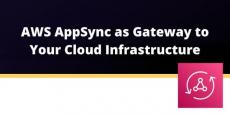You can find more resources and articles about serverless on our blog: https://dashbird.io/blog/
You can find more resources and articles about serverless on our blog: https://dashbird.io/blog/
You can find more resources and articles about serverless on our blog: https://dashbird.io/blog/
- October 2024 (1)
- August 2023 (1)
- July 2023 (2)
- January 2023 (1)
- September 2022 (1)
- August 2022 (2)
- July 2022 (1)
- June 2022 (2)
- May 2022 (2)
- April 2022 (1)
- March 2022 (2)
- February 2022 (2)
- January 2022 (3)
- December 2021 (5)
- November 2021 (9)
- October 2021 (12)
- September 2021 (4)
- August 2021 (9)
- July 2021 (8)
- June 2021 (9)
- May 2021 (9)
- April 2021 (12)
- March 2021 (9)
- February 2021 (8)
- January 2021 (11)
- December 2020 (9)
- November 2020 (10)
- October 2020 (7)
- September 2020 (8)
- August 2020 (9)
- July 2020 (11)
- June 2020 (6)
- May 2020 (7)
- April 2020 (13)
- March 2020 (7)
- February 2020 (1)
- December 2019 (5)
- November 2019 (5)
- October 2019 (4)
- September 2019 (3)
- August 2019 (5)
- July 2019 (8)
- June 2019 (2)
- May 2019 (3)
- April 2019 (1)
- March 2019 (3)
- February 2019 (6)
- January 2019 (5)
- December 2018 (2)
- October 2018 (4)
- September 2018 (8)
- July 2018 (2)
Monitor serverless applications. Failure detection, analytics and visibility for AWS Lambda based applications. 5 minutes setup with no overhead or code changes.
Dashbird integrates closely with AWS to bring visibility into serverless applications. By mapping applications resources, importing CloudWatch logs and integrating with AWS X-ray it's able to provide all pillars of observability with no performance overhead or code changes.
Build quicker & operate with confidence:
- Visibility into each application layer: Dashbird provides all relevant account-, service- and function-level metrics. This, enables you to analyse and optimise performance, cost and resource usage across the board.
- Failure detection and alerting: Dashbird recognises all Lambda specific failures like timeouts, configuration errors and memory outages. It also has an eye for all possible exceptions and runtime errors. It integrates with Slack or e-mail so you won't have to change your workflow.
- Debugging and troubleshooting: Dashbird structures logs to make them easily navigable. It also provides full text search and live-tailing logs from CloudWatch and fetches execution profiles from X-ray.
- Execution profile: Connect invocations with execution profiles from AWS X-Ray and see how long it took to execute any API call or other action in your Lambda function.
Start using Dashbird for free!






















